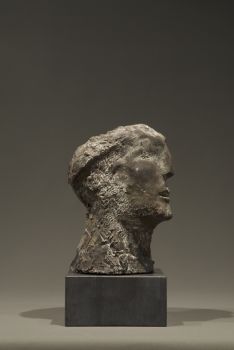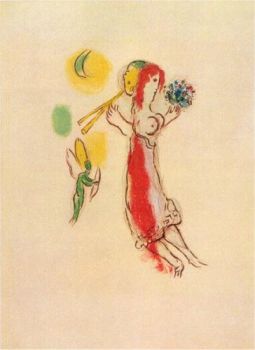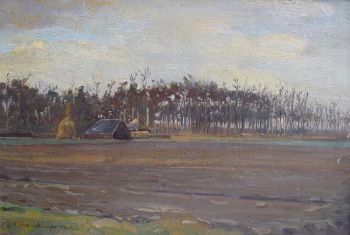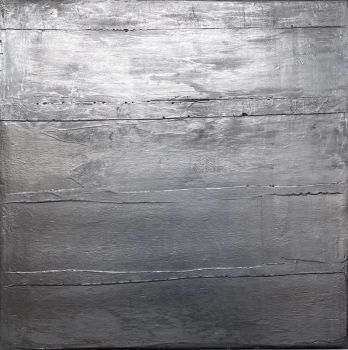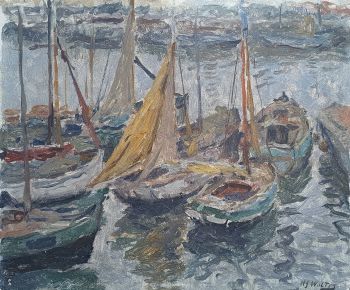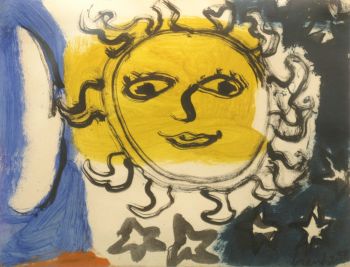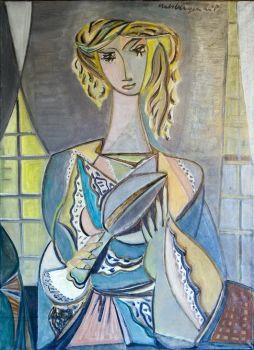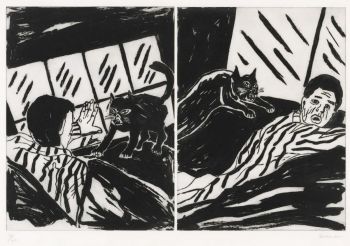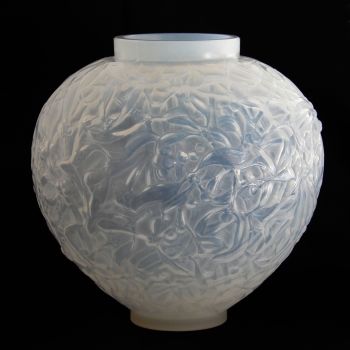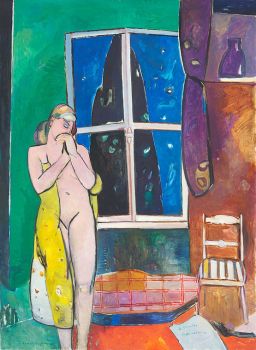About the artist
François Eugène Rousseau (Paris, 1827-1891), his father owned a porcelain and ceramics shop on Rue Coqulliere in Paris. Rousseau went to work in his father's shop and also worked at the Manufacture de Sèvres, where he collaborated with several artists. In 1850 he took over the business from his father and also remained associated with the Manufacture de Sèvres.
He was very interested in the introduction of Japanese art after the opening of Japan to foreign countries. He immersed himself in it more and decided to design a Japanese tableware with decorations by the painter/etcher Felix Bracquemond (1833-1914). The tableware was also exhibited at the Paris World's Fair of 1867, where it was a great success.
At the same time, he also set up a studio where he experimented with glass and glass decoration. Technically he was completely incompetent and he let his glass made by the brothers Adrien and Léon Appert in Clichy. Rousseau has many ideas for special designs and decorations. The brothers like to carry it out, Rousseau takes care of the decorations himself, although he does have an assistant Eugène Michel who mainly does the engravings and intaglios.
Rousseau was inventive and original in his designs. His designs were often based on his interest in nature and Japan. Sometimes the shapes of his vases were very austere but applications were applied to them, sometimes his vases were completely free of shape and asymmetrical.
He was one of the first French artists to experiment with cased, double-layered glass. He also made crackled glass which he filled in various colours and covered with clear, often coloured glass, creating special effects. Sometimes his glass seemed to be made of gemstone. But he also made double-layered smoky or clear glass vases with an engraved decor or with deeply carved decorations (intaglio technique) that were sometimes (partly) coloured or enamelled, often decorated with applications such as the vase above with a blue dripping effect, ears and/or masks in relief.
His vases were actually only made for special exhibitions, so in 1869 he sold two painted vases to the Albert & Victoria Museum. He also received many positive reactions to the Exposition de l'Union Centrale des Beaux-Arts appliqués à l'Industrie in 1874.
During this period, Ernest-Baptiste Léveillé also became his assistant and the glass cutter Alphonse-Georges Reyen also came to work for him. In 1885 he sold his business to Ernest Baptiste Léveillé, who continued to make the designs of his teacher and friend until 1890. The vases are signed from 1885-1890 with "E. Léveillé and E. Rousseau. After that Léveillé increasingly goes his own way.
François Eugène Rousseau died in 1891. Together with Emile Gallé, he is seen as the forerunner of modern glass art of this time.
Rousseau's vases are very rare and were only produced in small quantities for the major exhibitions, especially those in Paris. They were often purchased by the various museums that bought them for their permanent collections.



